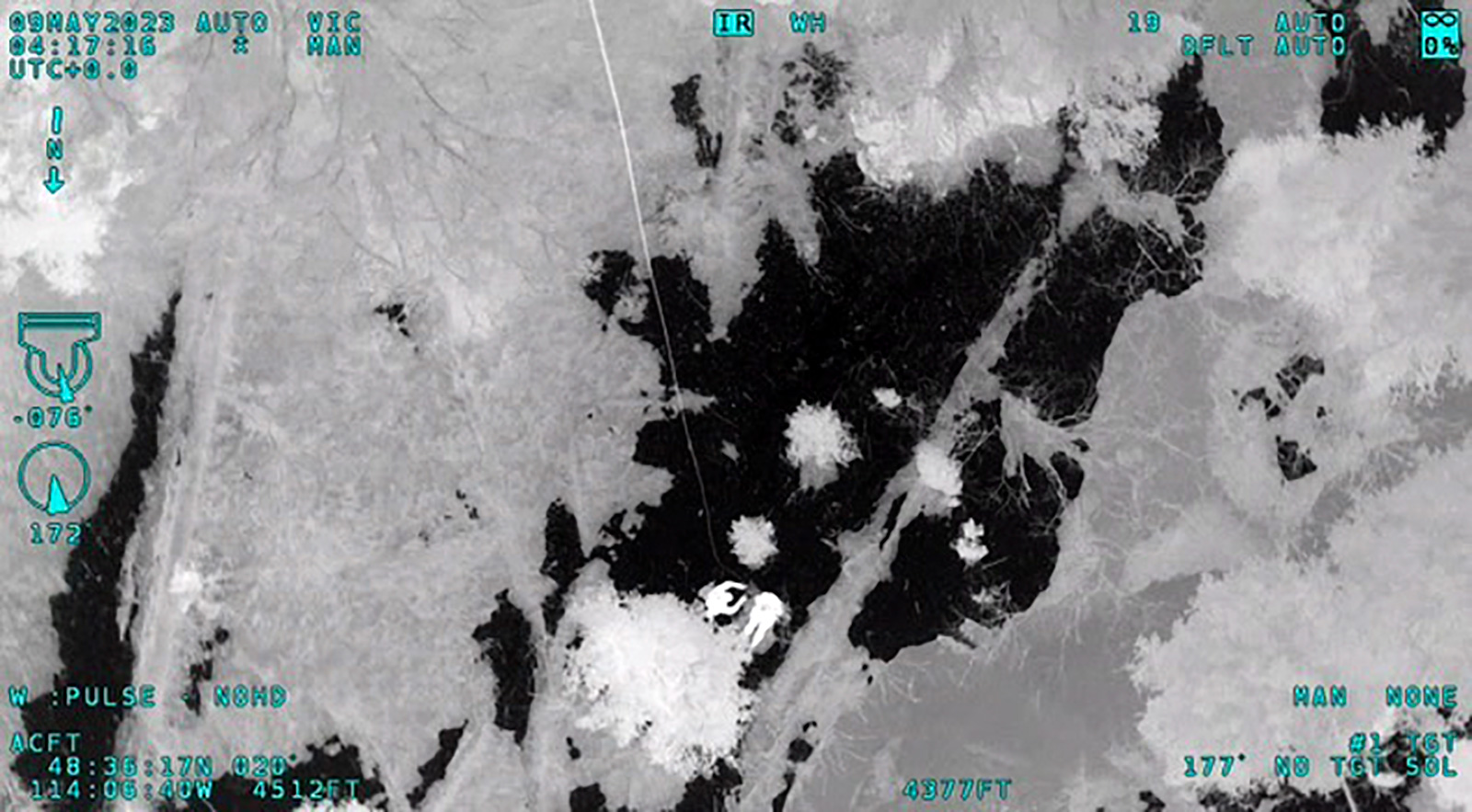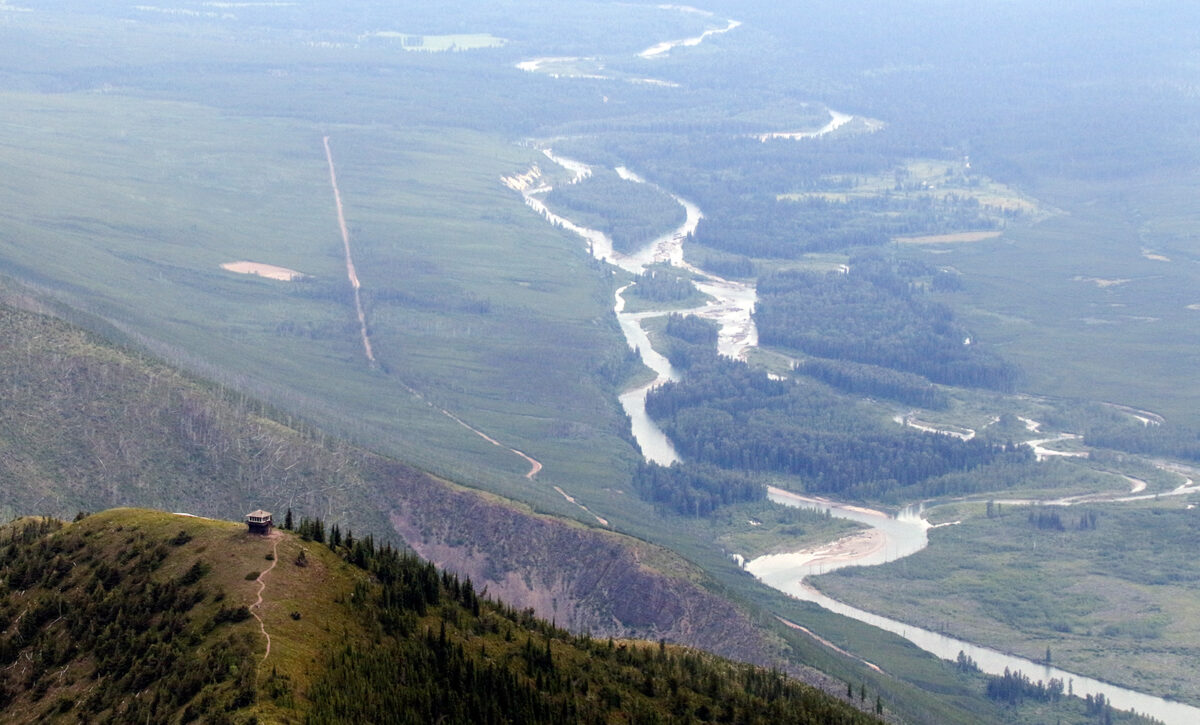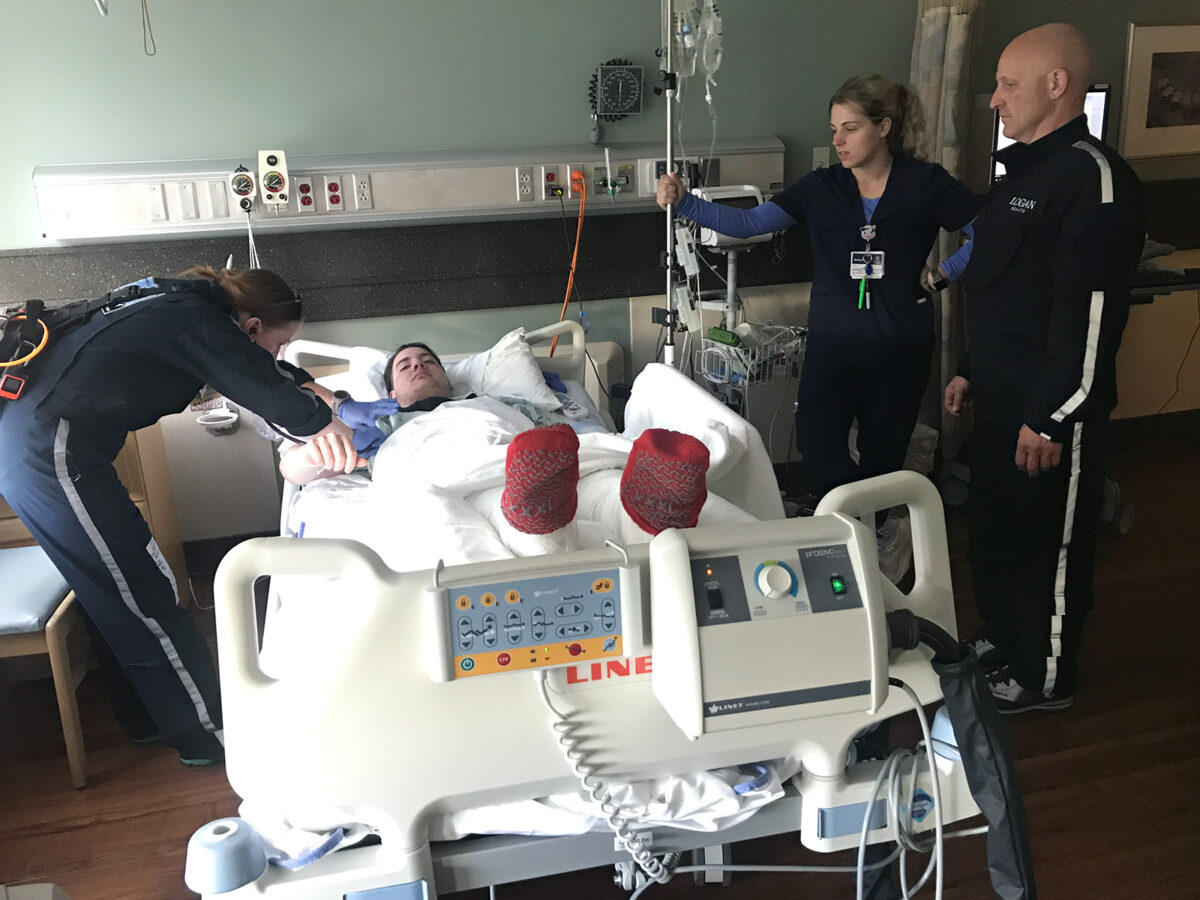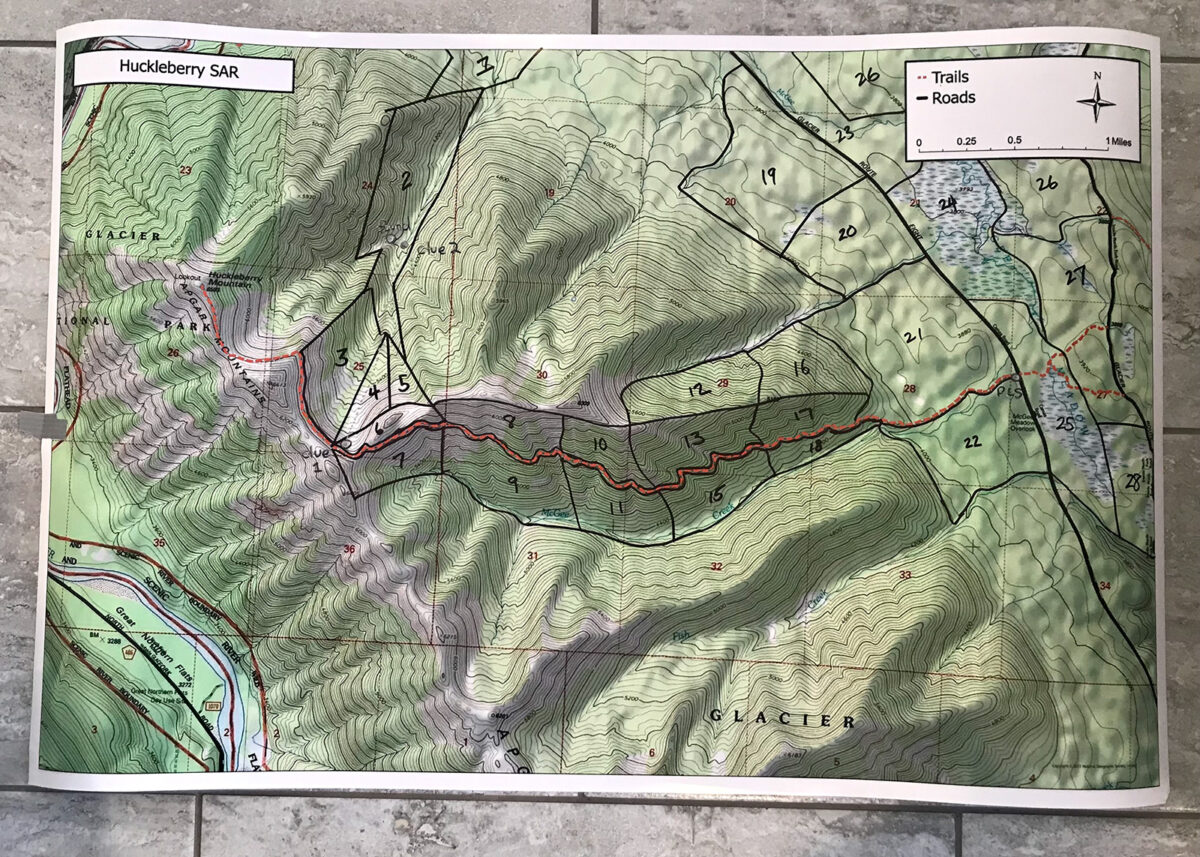Stranded Glacier National Park Hiker Shares Story of Survival and Hope
After slipping off a snow-covered trail in Glacier National Park and losing both shoes, 19-year-old Matthew Read hunkered down in a tree shelter for three nights and awaited his rescue. When help finally came, he was overcome with relief.
By Maggie Dresser
When a Glacier National Park ranger called Barbara Read on Sunday, May 7, to explain that a car belonging to her 19-year-old son, Matthew, had been found at the Huckleberry Lookout Trailhead with no trace of its owner, she panicked.
Barbara knew her son had left for a hike in the park two days earlier, but nobody had heard from him since his departure. Matthew had just finished a semester at Brigham Young University in Provo, Utah, where he was studying chemical engineering, and he’d stopped by his favorite national park on his way home to Michigan for summer break. He told his family that the weather was beautiful, and he was heading into Glacier for a day hike.
Two days after Matthew set out for his hike, Barbara called the park service to find out any information on her son’s whereabouts. Two hours later, officials called her back after locating his vehicle at the trailhead and began asking her for identifying information.
Barbara handed the phone to her husband and ran to her computer to book a flight to Kalispell. A few hours later, Barbara was departing from the Detroit Metro Airport, and she’d landed in the Flathead Valley by 9:30 p.m.
“Just knowing that they had found his car – I immediately knew it was serious and I had to get out there,” Barbara said.
By the time park rangers returned Barbara’s initial phone call, they had already begun a hasty search, which involved hiking up the trail and looking in the most obvious areas. An incident command system was quickly established, and Glacier National Park (GNP) Ranger Operations Coordinator Micah Alley began assembling teams, printing maps and pooling resources as the incident commander.
Alley requested help from Flathead and North Valley search-and-rescue crews, dog teams, the Flathead County Sheriff’s Office, the U.S. Border Patrol and assistance from Two Bear Air, a search-and-rescue helicopter service based out of a hangar at Glacier Park International Airport. After unsuccessful search efforts on the first day, the operation would continue at first light on Monday.
With rainy weather conditions, temperatures hovering around 40 degrees and no word about Matthew, Barbara was starting to lose hope by day four.
“The possibility of finding someone who was out for 72 hours in those conditions — I couldn’t quite see it anymore,” Barbara said. “We were just so sad, and we were coming to terms with not finding him.”

Matthew had arrived at the Huckleberry Lookout Trailhead in the Apgar Mountains on the western edge of the park on Friday, May 7. He left the trailhead with a phone, camera, rain jacket, water bottle, snacks and a birdwatching book in his backpack, with plans to hike as far as he could before the snow would force him to turn around.
After chatting with a few groups on his way up Huckleberry Mountain, he learned that the trail would become treacherous at the four-mile mark, where the previous groups had turned around.
When Matthew reached that point, he chose to keep going, proceeding across the snow until it could no longer support his weight, causing him to sink into the snowpack and become stuck. After 20 minutes of struggling to free his leg, he wiggled his foot out from his loosely tied tennis shoe and was able to move again.
With both feet on the surface now, but only one shoe on, he slipped off the trail again as he tried to regain his balance on the steep slope. To Matthew’s horror, his other foot plunged into the snow, putting him in the same predicament that he’d just escaped, this time with only one shoe on. After wiggling his other foot free from his tennis shoe, leaving him completely unshod, Matthew attempted ascending back up the slope to return to the trail. But his efforts were futile as he post-holed through the chest-deep snow, slipping further downslope with each step.
“I knew I wouldn’t be able to make it back,” Matthew told the Beacon two weeks later during a phone call from his hospital room.
Wearing shorts and no shoes, Matthew’s alternate plan was to relocate to dryer terrain, where travel would at least be more manageable. Unable to walk without slipping, he scooted on his butt, using his feet for brakes until he reached the end of the snow field, losing his phone and water bottle along the way.
Matthew estimates he was about one-fifth of a mile east of the trail by the time he escaped the snow, only to emerge into a densely forested drainage filled with deadfall and thick trees that made it nearly impossible to bushwhack his way back to the trail.
“There was no way I could get back,” Matthew said.
He was following a drainage when poor weather moved into the area and it began to drizzle. Matthew stopped to build a shelter out of a fallen tree, some branches, pine needles and dirt, sitting there for about four hours. After he rested and once the weather cleared up, his next goal was to head east and find Camas Road, which bisects the trailhead.
After a two-hour slog through the heavily forested terrain, Matthew realized he wasn’t making any progress and needed to wait in one location for rescuers, an all-purpose survival method he learned in Boy Scouts. He turned around to find his shelter and to get as close to the trail as he could to make it easier for search teams to find him.
Unable to make it back, he stopped and built a new shelter, which he didn’t leave until rescue crews found him three days later.

Early Monday morning, four days after Matthew set out on his hike, dozens of searchers from multiple agencies and dog teams had assembled and were looking for him.
Two Bear Air flew over the region on Sunday night before rainy weather grounded the helicopter, with the crew resuming operations the next day.
Officials with Two Bear were flying in a separate helicopter for a demo flight at the time of the search, with a representative who was showing them a potential camera that could be beneficial to the search-and-rescue operation. During the flight, they spotted footprints in the snow on the ridgeline where Matthew had slid and quickly relayed the information to the on-duty Two Bear pilot, who re-routed to the scene and began visually searching the drainage.
Equipped with an infrared camera, Two Bear Air Chief Pilot James Heckman said that, while the camera is incredibly useful in finding warm bodies in the right conditions, it’s not always effective if it’s sunny outside because the camera registers hot spots.
“The infrared camera wasn’t working that well because of the radiation absorbed by the sun,” Heckman said.
In their visual search, rescuers traced footprints leading from the trail to the drainage and pieced together Matthew’s travel path. They returned to the airport for more fuel and headed back to the park as the sun was setting, at which point the infrared camera would be able to function better.
“Heated bodies show up much better after dark,” Heckman said. “Everything was pointing to that one specific drainage — they did one or two passes up that drainage and the tactical flight officer running the camera located him right away.”
When Matthew saw the lights coming from the helicopter, he said he was flooded with relief. A rescuer was lowered to the ground on a 175-foot hoist and Matthew yelled to get his attention.
“When he came down, I was so relieved,” Matthew said. “I was starting to be unsure if they would actually find me and to have the helicopter drop the lights and have someone next to me. It’s about to be over — that was what was going through my head.”
Matthew’s lower legs and feet were severely frostbitten, and he was borderline hypothermic by the time help arrived, though he managed to walk 20 feet to join his rescuer in the hoist.
After the flight out of the park, he was transferred to Evergreen Ambulance and transported to Logan Health. His family arrived about a half-hour later.
Alley and the park’s lead investigator visited Matthew in the hospital the next day to interview him and debrief his family, explaining the search-and-rescue process and to learn what had led to Matthew’s circumstance.
“They were grateful, and they were certainly overwhelmed at the time,” Alley said. “Matthew was conscious and actually really talkative. He was very willing to share his experience and help us build our knowledge base.”

Three days after his rescue, Matthew was transferred to the Mayo Clinic in Rochester, Minn., where he has been receiving constant intravenous fluids and hyperbaric oxygen therapy for his frostbite. The intensive treatment uses 100% oxygenated air and allows Matthew’s body to get two to three times greater-than-normal atmospheric pressure.
When he arrived in Minnesota, doctors told Matthew both of his legs would likely be amputated from the mid-calf. But since he began the hyperbaric therapies, his team of doctors said he might not need an amputation after all — although as of May 23 they still hadn’t ruled it out.
Matthew sees a steady stream of doctors every day at the Mayo Clinic, and he will continue receiving hyperbaric treatments for several more weeks and possibly months, depending on how his body responds. But in the meantime, he’s grateful to be alive and he remains in high spirits.
Reflecting on his time in the woods, he said the isolation was especially challenging and it was difficult to be stationary for three nights, but he was confident that his strategy was his best chance of survival. A determination to return to his family kept his morale boosted and he kept himself busy with small tasks like making signs and formulating plans to get the attention of rescuers. During darker moments, he wrote notes in his birdwatching book to his family and friends, just in case he didn’t make it.
The most demoralizing moments for Matthew were when he heard the helicopters passing overhead throughout the day. He would jump out of his shelter to wave, but nobody ever saw him.
But whenever Matthew was feeling low, he had a few lemon candies stashed away in his backpack that survived the journey from the snow-covered Huckleberry Lookout Trail.
“Whenever I did lose hope, I had those lemon candies,” Matthew said. “They were a spot of sunshine.”
